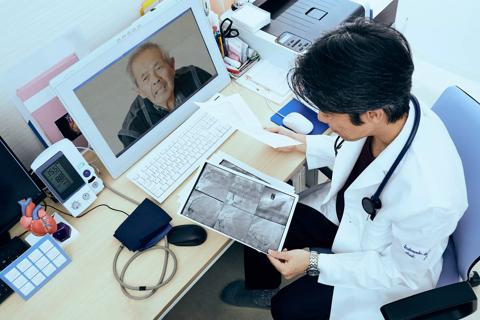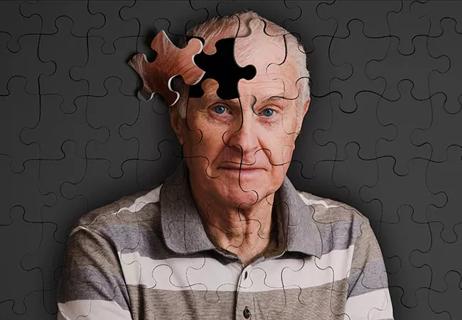Patient self-assessment is also needed

Waiting for a patient to report concerns about memory loss may not be the best protocol for cognitive screening. But indiscriminate use of objective paper and pen screening tools may not be effective either.
Advertisement
Cleveland Clinic is a non-profit academic medical center. Advertising on our site helps support our mission. We do not endorse non-Cleveland Clinic products or services. Policy
“To get an accurate picture of a patient’s cognitive health, we need a combination of subjective and objective measures,” says Ardeshir Hashmi, MD, Endowed Chair for Geriatric Innovation and Director of Cleveland Clinic’s Center for Geriatric Medicine. “Patients may underreport concerns or not be aware of them. And common screening tools can under report cognitive losses in higher functioning patients, potentially causing physicians to disregard patients’ legitimate concerns.”
This conundrum particularly affects primary care providers, who are on the front lines of addressing cognitive decline in patients.
A recent study in Journal of the American Board of Family Medicine, coauthored by Dr. Hashmi, explored the interaction of subjective and objective cognitive screening tools. Authors also designed and developed a specific computerized screening tests that may be more sensitive than currently used objective screening tools at detecting patient-reported decline.
The study included 121 participants age 65 and older with Montreal Cognitive Assessment (MoCA) scores of 21-30 (mild cognitive impairment to no impairment). MoCA is a widely used cognitive screening tool which, through a series of brief tasks, assesses a patient’s language, visuospatial, memory and abstract thinking skills.
In addition to MoCA, study participants completed a(n):
Advertisement
Based on their results, participants were grouped into four categories:
For comparison, participants also were grouped into four categories based on their subjective self-assessment and MoCA score.
Of the 20 patients categorized as impaired according to MoCA score, only three (15%) reported a high level of subjective concern. However, of the 24 patients categorized as impaired according to the computerized test, nine (37.5%) reported a high level of subjective concern.
“It seems like the computerized test may be better than MoCA at detecting deficits reported by patients,” says Dr. Hashmi. “However, the more important finding is that objective testing (by either method) detected deficits that patients weren’t aware of. If we’re waiting for patients to report a concern before we conduct cognitive screening, we’re likely waiting too long. We need to be more proactive so we can address cognitive decline earlier and try to minimize it.”
Out of all four objective assessments used in this study (MoCA and the three computerized activities), the even-odd switching component of the computerized test was most sensitive to unimpaired participants’ subjective concerns. It was the only one to show a significant difference between participants with high or low levels of subjective concern (P = 0.0003) — as well as between participants older or younger than age 75 (P = 0.005).
Advertisement
Participants with a high level of concern about their cognitive decline took 48% longer to complete the even-odd switching task. Older participants took about 35% longer than younger participants.
More research is needed to study this finding, but Dr. Hashmi emphasizes that primary care providers need more sensitive tools to effectively screen patients who report early symptoms of cognitive decline. Patients may sense decline even before screening tools detect mild cognitive impairment.
“Current paper and pen cognitive screening tools are limited because they don’t detect declining function in patients who are cognitively high functioning at baseline. This is known as the ‘ceiling effect,’” says Dr. Hashmi. “A test like even-odd switching is more challenging — forcing participants to keep track of two sets of numbers at the same time and continuously shifting their attention between the sets — and thus may be better at confirming self-reported declines in higher functioning people.”
Objective assessments need to work in tandem with subjective self-assessments, says Dr. Hashmi. One without the other may cause clinicians to miss early indications of cognitive decline in some patients.
Reliable, early detection is important because behavioral and lifestyle interventions can slow cognitive decline and reduce dementia risk. Moreover all current FDA-approved medications for Alzheimer’s dementia are designed to slow down progression so early commencement may be beneficial.
“Objective assessment alone may not be enough to convince a patient to make lifestyle changes or undertake other interventions for their cognitive health,” says Dr. Hashmi. “We need their buy-in.”
Advertisement
Advertisement

Complications highlight need to exercise caution when managing geriatric patients

Structured data helps identify older adults at risk for poor outcomes, defines patients who require more comprehensive assessments

Analysis underscores how telehealth can help pinpoint elder abuse

Accurate, transparent documentation may reduce risks associated with common disorder

Clinicians face difficult conversations when drugs and firearms intersect

New study confirms prevalence, downstream effects of dysphagia and dysphonia

Accuracy of Mini-Cog screening tool enhanced by mandatory training

Clinicians examine strategies to address unique needs of those aged 85 and older